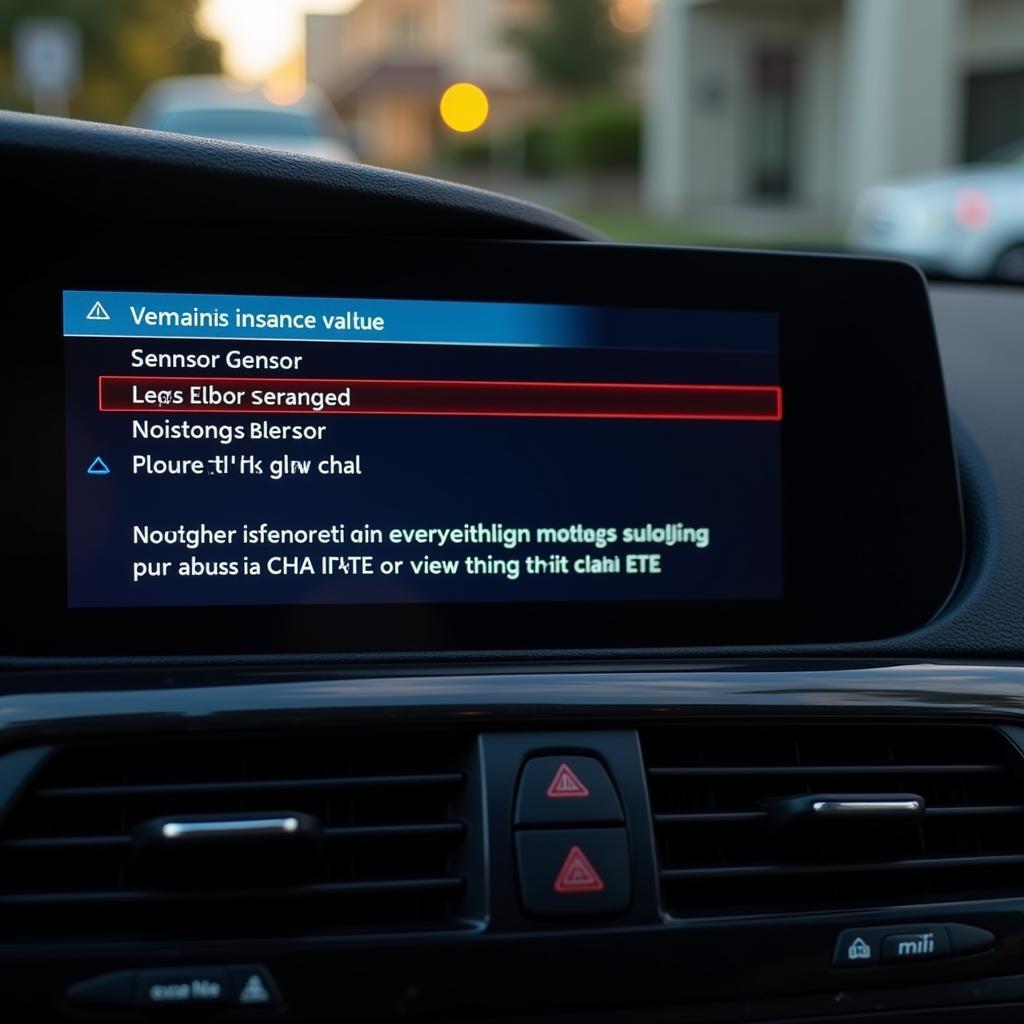Low impulse value on car diagnostics can be a confusing term, leaving car owners and even some mechanics scratching their heads. It’s a crucial piece of information that can pinpoint specific issues within your vehicle’s complex systems. This article will delve into what low impulse value means, its common causes, and how to interpret this data during car diagnostics.
What Does “Low Impulse Value” Actually Mean?
Low impulse value typically refers to a weak signal detected by a diagnostic sensor. These sensors monitor various components in your car, from crankshaft position to camshaft timing and even fuel injectors. When a sensor registers a low impulse value, it indicates a problem with the signal generation or transmission from the component being monitored. This doesn’t necessarily pinpoint the exact fault, but it narrows down the potential problem areas. Think of it like a weak radio signal – you know there’s a station out there, but something’s interfering with clear reception.
Common Causes of Low Impulse Value
Several factors can contribute to low impulse values during car diagnostics. One of the most frequent culprits is a failing sensor. Just like any electronic component, sensors can wear out over time and produce inaccurate readings. Wiring issues, such as damaged or corroded wires, can also disrupt the signal transmission, leading to low impulse values. Other potential causes include:
- Faulty Component: The component itself might be malfunctioning and not producing a strong enough signal.
- Poor Connections: Loose or dirty connections can weaken the signal.
- Electromagnetic Interference (EMI): Other electronic devices can sometimes interfere with the sensor signals.
- Low Battery Voltage: A weak battery can affect the performance of various electronic systems, including diagnostic sensors.
Interpreting Low Impulse Values During Diagnostics
Interpreting low impulse values requires a systematic approach. First, identify the specific sensor reporting the low value. This will give you a starting point for your investigation. Next, visually inspect the wiring and connections related to that sensor. Look for any signs of damage, corrosion, or loose connections.
If the wiring appears to be intact, the next step is to test the sensor itself using a multimeter or an oscilloscope. These tools can help determine if the sensor is functioning correctly. If the sensor is faulty, replacing it is usually a straightforward fix. However, if the sensor is working fine, the problem might lie within the component it’s monitoring.
Dealing with Low Impulse Value: A Step-by-Step Guide
- Identify the Sensor: Determine which sensor is reporting the low impulse value.
- Visual Inspection: Check the wiring and connections for any visible damage.
- Test the Sensor: Use a multimeter or oscilloscope to verify the sensor’s functionality.
- Check the Component: If the sensor is working, investigate the component it monitors.
- Consult a Professional: If you’re unsure about any step, seek expert help.
“A low impulse value doesn’t always mean a major problem,” says Alex Thompson, Lead Automotive Diagnostician at Thompson Automotive Solutions. “Sometimes, it’s just a loose connection or a minor wiring issue. However, it’s essential to address it promptly to prevent potential further damage.”
Conclusion
Low impulse value on car diagnostics serves as an important indicator of potential problems within your vehicle’s systems. By understanding what this term means and how to interpret it, you can effectively troubleshoot issues and keep your car running smoothly. Remember, early diagnosis is key to preventing more significant and costly repairs down the line. Don’t ignore those low impulse values; they might be whispering about a bigger problem.
FAQs
- What is the most common cause of low impulse value? Often, a failing sensor is the primary culprit.
- Can I fix low impulse value issues myself? Basic checks like inspecting wiring can be DIY, but more complex diagnostics might require professional help.
- Is a low impulse value always serious? Not necessarily. Sometimes, it’s a minor issue like a loose connection.
- What tools do I need to diagnose low impulse value? A multimeter or oscilloscope can be helpful for testing sensors.
- How can I prevent low impulse value issues? Regular car maintenance and prompt attention to warning signs can help prevent many diagnostic problems.
- What should I do if I see a low impulse value on my car diagnostic scan? Start by identifying the affected sensor and inspecting the related wiring and connections.
- Can extreme temperatures cause low impulse value issues? Yes, extreme temperatures can impact sensor performance and potentially lead to low impulse values.
Need Further Assistance?
For expert help with car diagnostics and repairs, contact us via WhatsApp: +1(641)206-8880 or Email: [email protected]. Our 24/7 customer support team is ready to assist you.
“Ignoring a low impulse value is like ignoring a small crack in your windshield,” adds Maria Sanchez, Senior Technician at Sanchez Auto Repair. “It might seem insignificant at first, but it can quickly become a much bigger problem if left unattended.”
We also recommend checking out our other articles on car diagnostics and troubleshooting for further information and helpful tips.



